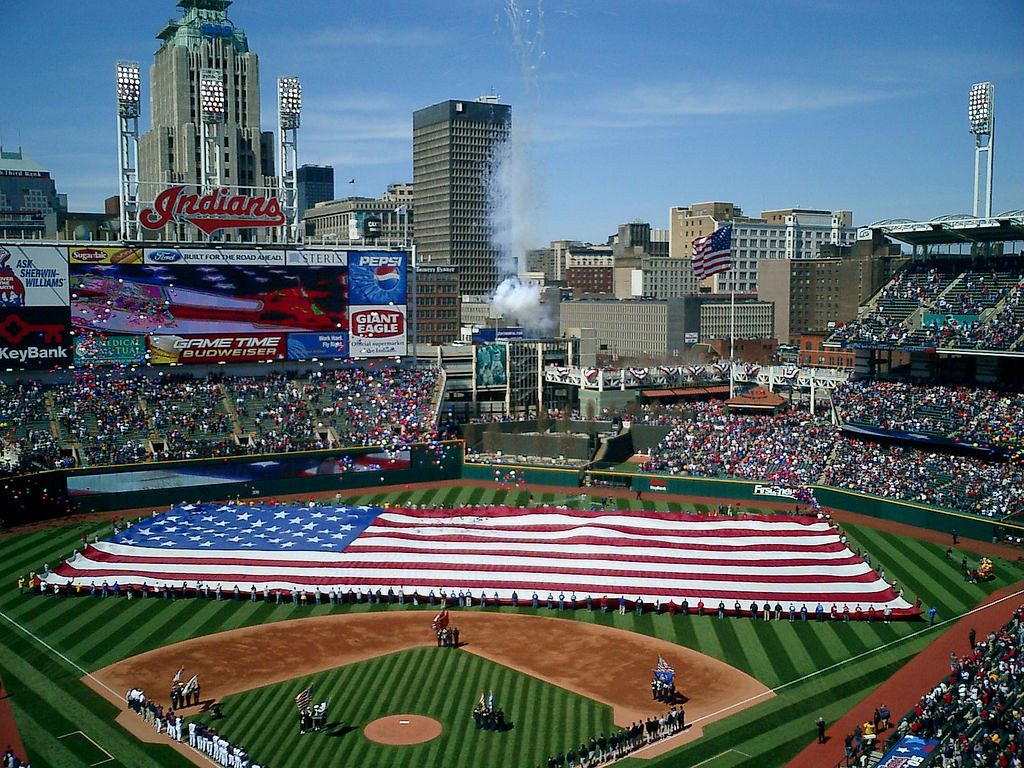
Peak professional baseball arrived in 1949, when more than thirty-nine million fans sat on splintery bleachers and under leaky grandstands in support of their local minor-league nines. They watched in San Diego and Stroudsburg, Fort Worth and Fond du Lac, Louisville and Lumberton—448 towns and cities in total, across all forty-eight states, Canada, Cuba, and Mexico. The teams for which they cheered played in one of fifty-nine Major League–affiliated leagues, ranging from Class D to Triple-A. At least as many clubs played outside that structure, including black, semipro, American Legion, industrial, and town teams. There were even eight entries in the All-American Girls Professional Baseball League, then at or near the height of its popularity.
Mickey Mantle made his professional debut in 1949—with the Class D Independence Yankees. Arky Vaughan made his departure—with the Triple-A San Francisco Seals. Lew Burdette, Joe Adcock, Whitey Ford, and Carl Erskine tantalized on their way up to the bigs. Bobo Newsom and Doc Cramer took another shot at glory on their way down. Frank Saucier hit .446 for the Wichita Falls Spudders. Leo “Muscle” Shoals hit fifty-five home runs for the Reidsville Luckies. Max West drove in 201 runs for the San Diego Padres. One-armed outfielder Pete Gray played the last game of his career in Dallas. Former Negro League stars Ray Dandridge, Luke Easter, and Harry “Suitcase” Simpson set fire to their respective leagues while waiting with varying degrees of patience for a chance in the majors—a chance that, in Dandridge’s case, would never come.
Minor-league baseball, like life in general, was less regulated, less secure, more unpredictable, more exciting, and, not coincidentally, more violent than the baseball (and life) we have come to know. In Hagerstown, a guard shot at a fan for pocketing too many foul balls. In Cedar Rapids, a melee was halted only when the national anthem was played over the loudspeakers. In Havana, Pepper Martin was suspended for the season for choking an umpire. In San Bernardino, Forrest “Frosty” Kennedy went two-for-five at the plate even though both of his wrists were taped. On the previous night he had attempted suicide.
The next year total minor league attendance declined dramatically—by more than seven million. Nineteen fifty-one saw the same massive decline. By 1959 only twenty-one leagues were operating. Three years later, the minors reached their attendance nadir, having lost on the order of thirty million fans in just thirteen years. American progress had unraveled the fabric of American community, of which the vast minor league system was a manifestation. Television, Interstate highways, suburbanization, and air conditioning, among other culprits, combined to cool Americans’ ardor for sitting in the hot and humid twilight to watch teams that included nary a national celebrity. By the 1960s the average American’s life had become less local and more mediated. An entire American age of lusty communitarianism had crested.
Not until the late 1970s did the minor leagues begin to emerge from the death spiral that had gripped them just when they seemed to be at their healthiest. At about the same time there began to emerge a minor-leagues literature, consisting most typically in wistful memoirs, literary travelogues, or combinations thereof. Among my personal favorites are Pat Jordan’s A False Spring (1975), Roger Kahn’s Good Enough to Dream (1985), David Lamb’s Stolen Season (1991), and Ernest Green’s The Diamonds of Dixie (1995).
By the time Dirk Hayhurst’s The Bullpen Gospels (2010) and Lucas Mann’s Class A (2013) were published, the minor leagues were once again riding high. There were no longer nearly so many teams as in the 1940s (and earlier), but the attendance record of 1949 was eclipsed in 2004, and in 2019 the 176 minor league clubs that were formally affiliated with Major League Baseball drew about 41.5 million fans. There were no longer so many weird statistical accomplishments, nor so many colorful nicknames, nor so many oddball characters, nor so much uniqueness, period, but by the 2000s the minor leagues were nevertheless once again great fun—much more fun than MLB.
Not only that, but much like the local high school, the county fair, or the fire company, minor league teams, at least at their lower levels, functioned as core community institutions, and at a time when such institutions were sorely needed. Teams networked local residents, allowed for regular but informal interactions, showcased community organizations and initiatives and businesses, offered entry-level and part-time jobs for local youth, and provided something for the community to collectively support and rally around that was utterly apolitical and noncontroversial.
Then Major League Baseball did what Major League Baseball can be reliably expected to do: it acted with gobsmacking stupidity. Having blithely canceled the 2020 minor league season—but not, of course, the MLB season—due to purported COVID concerns, in 2021 MLB announced that in the name of efficiency it was reducing the number of minor league affiliates by more than 25 percent, down to 120. Forty-two towns, mostly out-of-the-way, working-class sorts of places, would lose their baseball teams. These were “some of the few remaining places where people could still find happiness and connection, for affordable prices, as they had for generations,” Will Bardenwerper reminds us, and now they would be extinguished, “merely to save the equivalent of one major league minimum salary.”
Bardenwerper, an Iraq War veteran and author, prior to Homestand, of The Prisoner in His Palace: Saddam Hussein, His American Guards, and What History Leaves Unsaid, decided to spend the summer of 2022 in some of the towns affected by MLB’s shortsighted cupidity. Happily, he set up camp in Batavia, New York, where Front Porch Republic cofounder Bill Kauffman became his Virgil. Just as happily, thanks to new ownership Batavia’s Muckdogs had been reincarnated in 2021 as an entry in the Perfect Game Collegiate Baseball League, a wooden-bat summer circuit for players hoping to improve their games and get noticed by scouts.
The Muckdogs’ hardworking owners—a couple named Robbie and Nellie Nicholas—are just two of the unforgettable characters to whom Bardenwerper introduces us in Homestand. Robbie is a former minor-league hockey player who, thanks to an especially terrible and rare disease, is racked with chronic pain. Nellie was raised in thirteen homes as a foster kid in southern California; two of her brothers had died of gunshot wounds, and another was in prison. It is telling that everyone Bardenwerper meets, save for the Kauffmans, seems to have a nontraditional family situation. Bestey Higgins is an unmarried bibliophilic librarian (the adjective is important nowadays) who comes from Buffalo for every game with her best friend Ginny Wagner. Dr. Ross Fanara is an octogenarian who, with his wife Shirley, finds himself raising two great-grandchildren. In Elmira, Bardenwerper meets a man named Charles who, for reasons that go unstated, is acting as the guardian of a teenage son of a woman he used to date.
The strength of Homestand lies in Bardenwerper’s portraits of such people, portraits that amount to a revealing exhibition of what 2020s small-town America really looks like. It’s scruffier than it was in its heyday, rougher around the edges, more hardscrabble, but still leavened by numerous intelligent, fascinating, and large-hearted residents. In all that it is much like the baseball now featured at Batavia’s Dwyer Stadium, which in its new, independent version is in many respects a throwback to the minor-league baseball of the 1940s.
As Kauffman tells Bardenwerper, perhaps being cut loose from MLB will turn out to be a blessing. With local ownership, local staff, and at least a few locally sourced players, the Muckdogs and the dozens of other independent minor- and summer-league teams dotting the American landscape can now shape their own futures in a way they never could have as cogs in the giant affiliated-baseball wheel. Perhaps the same can be said of their host towns. Corporate perfidy notwithstanding, communities no less than individuals have more control of their destines than they imagine—if only they will decline to cooperate in their own destruction.
Image Via: Flickr












Jeremy:
Looks like that the Indianapolis stadium in the picture at the top, right? So did you ever watch “Rrrrraaaaazzzzoooorrrrr Shines!” at bat, back in the 90’s? I used to go to a game or two every year, when I lived down in between Rushville and Shelbyville. I hadn’t thought about that in years, so thanks for the article. As I recall, the nachos were really good at that stadium; you could get olives and jalapenos on them.